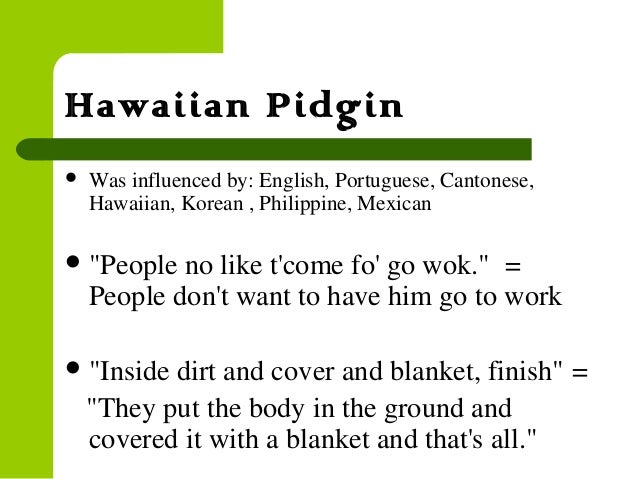
Hiri Motu is one of the three official languages of PNG. Its usage has declined in recent years in favour of Tok Pisin and English, but Motuan languages are still dominant in the Central and Gulf Provinces that surround Port Moresby. It was adopted and used by colonial authorities in the region and became a popular lingua franca throughout the Australian administered territory of Papua. Hiri Motu is a simplified version of the Motuan language used between different language groups along the Southern coast of PNG. Papua New Guinea broadcaster EMTV publishes its tok pisin news broadcasts online. The ABC’s Radio Australia broadcasts news and information programming in Tok Pisin and publishes stories through the ABC News website. The Australian National University offers studies in Tok Pisin through its College of Asia and the Pacific. Documentation and audio files are available to help the learning speaker. James Cook University maintains online pages with copies of a Tok Pisin language course developed the Australian National Unversity in the 1970s and 80s. There are few formal training programs in Tok Pisin, but there are a number of online resources to help the first-time speaker to gain proficiency. The language takes much of its grammar and vocabulary from English, with a number of words also adopted from German, and to a smaller extent from dominant traditional language groups. It is spoken and understood by an estimated three quarters of the country. Tok Pisin Photo: Twitter/Tim Bryson Pisin, literally ‘pidgin language’, is one of three official languages of Papua New Guinea, and in a country where more than 800 languages are spoken has become the most widely spoken language in the country. I love you from the tip of your hair to the tip of your toes: Mi lovim you lo head grass blo you go down lo finger leg you stret. These are English, Tok Pisin and Hiri Motu. To facilitate communication between different language groups, the country has adopted three languages as the official languages of government. Traditional languages may be limited to a small group or spread across a large geographic area. If you’re ready to leave and want to suggest that it’s time to go, this phrase is a great way to do it. Pictures included with Scriptures and other documents on this site are licensed just for use with those Scriptures and documents.įor other uses, please contact the respective copyright owners.More languages are spoken in Papua New Guinea than in any other country on Earth – an estimated 800 different languages. It’s a great way to let someone know that you’re on your way, or that you’ll be there soon.

You include the above copyright and source information. The Holy Bible in the Tok Pisin (Melanesian Pidgin) Language of Papua New Guinea without Deuterocanon/Apocrypha God i gat wanpela Pikinini tasol i stap.You may share and redistribute this Bible translation or extracts from it in any format, provided that:
#PNG PIDGIN ENGLISH PHRASES LICENSE#
This translation is made available to you under the terms of theĬreative Commons Attribution-Noncommercial-No Derivatives license 4.0. Translation by: The Bible Society of Papua New Guinea Bai ol i kisim laip i stap gut oltaim oltaim.īuk Baibel long Tok Pisin The Holy Bible in the Tok Pisin (Melanesian Pidgin) Language of Papua New Guinea without Deuterocanon/Apocrypha Buk Baibel long Tok Pisin bilong Niugini Em i mekim olsem bilong olgeta manmeri i bilip long em ol i no ken lus.

It is one of the official languages of Papua New Guinea and the most widely used language in that country The word tok means 'word' or 'speech' as in 'talk', and pisin means 'pidgin'. “God i gat wanpela Pikinini tasol i stap. Tok Pisin is an English-based creole spoken in Papua New Guinea by about 4 million people, 120,000 of whom speak it as their first language. The Holy Bible in the Tok Pisin (Melanesian Pidgin) Language of Papua New Guinea without Deuterocanon/Apocrypha Buk Baibel long Tok Pisin Tok Pisin Bible Language: Ĭopyright © 1969–2008 The Bible Society of Papua New Guinea


 0 kommentar(er)
0 kommentar(er)
